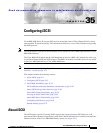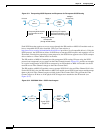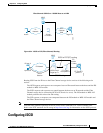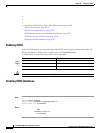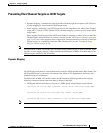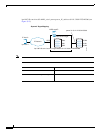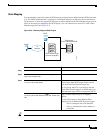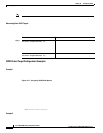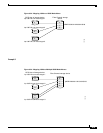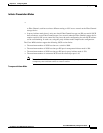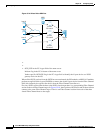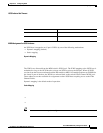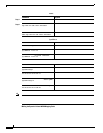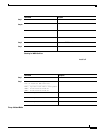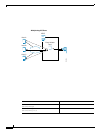
CHAPTER
Send documentation comments to mdsfeedback-doc@cisco.com.
35-1
Cisco MDS 9000 Family Configuration Guide
OL-6973-03, Cisco MDS SAN-OS Release 2.x
35
Configuring iSCSI
Cisco MDS 9000 Family IP storage (IPS) services extend the reach of Fibre Channel SANs by using
open-standard, IP-based technology. The switch allows IP hosts to access Fibre Channel storage using
the iSCSI protocol.
Note The iSCSI feature is specific to the IPS module and is available in Cisco MDS 9200 Switches or Cisco
MDS 9500 Directors.
The Cisco MDS 9216I switch and the 14/2 Multiprotocol Services (MPS-14/2) module also allow you
to use Fibre Channel, FCIP, and iSCSI features. The MPS-14/2 module is available for use in any switch
in the Cisco MDS 9200 Series or Cisco MDS 9500 Series.
For information on configuring Gigabit Ethernet interfaces, see the “Configuring Gigabit Ethernet
Interfaces” section on page 37-4.
This chapter includes the following sections:
• About iSCSI, page 35-1
• Configuring iSCSI, page 35-3
• iSCSI High Availability, page 35-38
iSCSI Authentication Setup Guidelines and Scenarios, page 35-45
About iSCSI Storage Name Services, page 35-58
About iSNS Client Functionality, page 35-59
Creating an iSNS Client Profile, page 35-59
About iSNS Server Functionality, page 35-62
Configuring iSNS Servers, page 35-63
Default Settings, page 35-72
About iSCSI
The iSCSI feature consists of routing iSCSI requests and responses between iSCSI hosts in an IP
network and Fibre Channel storage devices in the Fibre Channel SAN that are accessible from any Fibre
Channel interface of the Cisco MDS 9000 Family switch (see Figure 35-1).



